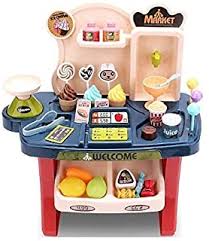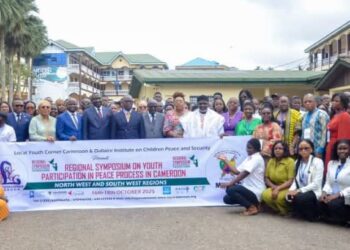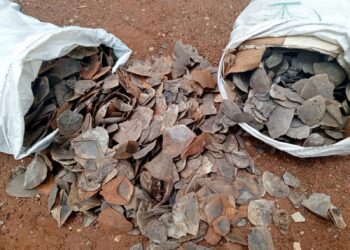Toys and many other children’s products can keep children happy for hours and the right ones are wonderful for encouraging development, creativity and can stir young imagination. However, children’s plastic toys can be a source of toxic chemicals, especially when the manufacturer is not properly regulated and laws are not sufficiently enforced.
“From a study we conducted in Cameroon on some randomly selected 22 pairs of PVC plastic articles including baby bottles, children’s toys and overalls, 3 out of the 22 items sampled abroad were contaminated with toxic heavy metals, i.e. less than 14 % while the rest were uninfected and safe for children. The two toxic heavy metals identified were Chromium and Cadmium.” Says Achille NGAKENG, IPEN Francophone Africa Regional Coordinator.
IPEN, International Pollutants Network is an organisation that fights for a toxic free future to humans and nature.
The low levels of heavy metals found in baby plastic toys are a relatively small part of a child’s overall toxic metal exposure risk. However, exposure from all sources should be minimized.
From birth, babies and kids are given teethers and plastic toys and a Non Governmental Organisations “JVE Cameroon and Terre et Développement” say not every plastic toy is created equal, It can be a surprising wake-up call for many parents to learn that some of their children’s favourite toys could be exposing them to harmful chemicals.
The implications of heavy metals with regards to children’s health have been noted to be more severe compared to adults. The element’s harmful consequences on children health include mental retardation, neurocognitive disorders, behavioral disorders, respiratory problems, cancer and cardiovascular diseases.
Research have shown that all children, both in the developing world like Cameroon and developed world are affected by exposure to hazardous chemicals. They are more at risk because they live life closer to the ground, crawling, digging in dirt and most often putting objects (plastic toys) in their mouth. These are natural behaviours and children should not be harmed by their toys.
“Despite the best intentions of parents, relatives, and friends, seemingly safe toys given to children this holiday season could contain another difficult-to-recognize surprise, so it is imperative for the public to and most especially parents to know the effects of toxic heavy metal ls on their children” Blondel SILENOU, President of Young Volunteers for the Environment “JVE Cameroon” told News Upfront during a press conference organized in Yaoundé, Capital of Cameroon on Wednesday August 4, 2021, to launch a campaign against toxics in children’s plastics.
Campaign Against Toxics Chemicals in Children’s Plastics in Cameroon

Most of us know about BPA – a chemical used to make hard, mostly transparent, plastics. BPA is also used in soft PVC plastic. BPA, and other Bisphenols, mimic the hormone estrogen and have been linked to prostate cancer, breast cancer, female infertility, and obesity. BPA is an especially dangerous endocrine disruptor since even small amounts of this chemical have been shown to cause serious reproductive damage, especially when the exposure occurs in utero.
“Pregnant Women like children are more vulnerable and this means that it is up to us to use a critical eye when purchasing toys for our kids and it starts with finding out what the toys is made with.” Achille NGAKENG, Said.
According to him, the effects are not immediate but can provoke long term effects on the health of the child. The toxics can get into the child’s body either through saliva or just body contact with the toy in some cases.
In the developed world, regulatory and safety organizations have long addressed some toxic levels in toys especially Lead, but some other metals are not overseen in the same way. Regulations on other toxic heavy metals like cadmium and barium are still voluntary, meaning that companies are legally free to swap out lead for a substance that could be equally destructive to a child’s body, or pick and choose the standards that are enforced.
In Cameroon, the situation is even more preoccupying given that people are still ignorant of the dangers of toxic heavy metals in plastics.
“My brother, I don’t know what you are talking about, how can there be toxic chemicals in plastics, plastics don’t absorb anything so I know they are not dangerous,” says Gistaff, a parent in Yaounde who adds that;
“If that should be the case that the plastics are dangerous, then it will be very complex for us to handle, I would want to safe my child but her happiness is also important to me and most of my children showed great love for plastic toys, am really confused.”
That explains why the NGO “JVE Cameroon and Terre et Développement” conducted the study and after analysing results of their findings came up with the following recommendations to try to address the situation in the country.
To members of the government
The Ministry of Environment, Nature Protection and Sustainable Development, via the SAICM focal point, should conduct similar studies on a regular basis (at least once a year) to ensure that children’s plastic products dumped on our markets are free of harmful effects.
The Ministry of Trade should demand that importers and local manufacturers of children’s plastic products provide tangible evidence that these products are free of intentionally added toxic heavy metals and do not pose a risk to human health.
The Ministry of Public Health could also contribute by publishing annual statistics on the estimated number of people affected by chemical-related illnesses or disorders. This should strengthen the country’s health policy on hazardous toxic substances.
To Civil Society Organizations and the media
That they should take more interest in the problems of pollution by hazardous waste and harmful chemical substances contained in certain consumer goods.
That they should alert, sensitize and train the population on the measures to adopt to better protect themselves on a daily basis against toxic substances.
That they should relay information about the harmful effects of chemicals and hazardous waste as far away as possible (neighbourhoods, villages, cantons, towns).
To Parents
Parents are really critical in the campaign. They are advised to be vigilant when buying plastic toys for their children. It is true that they can possibly identify toxic free toys because nothing on the toys labels the additive materials used in it’s production, but for the sake of safety, the best they can do is to monitor and limit how their children play with plastic toys especially taking them into their mouths which is found to be their favourite hobby.
To Production Companies
Most US based companies producing plastic toys are respectful of certain restrictions, but according to Achille NGAKENG, some Asian and other continental companies are not regulated. It would be wise for them to take into consideration the lives of children when manufacturing their plastic products by knowing the best additive materials to use.








